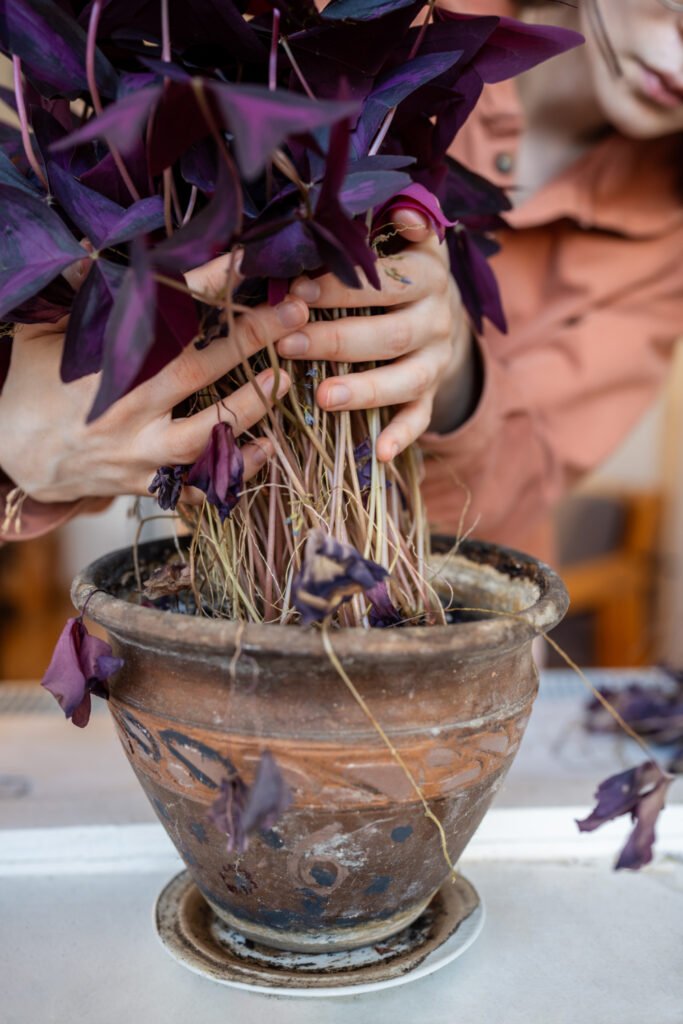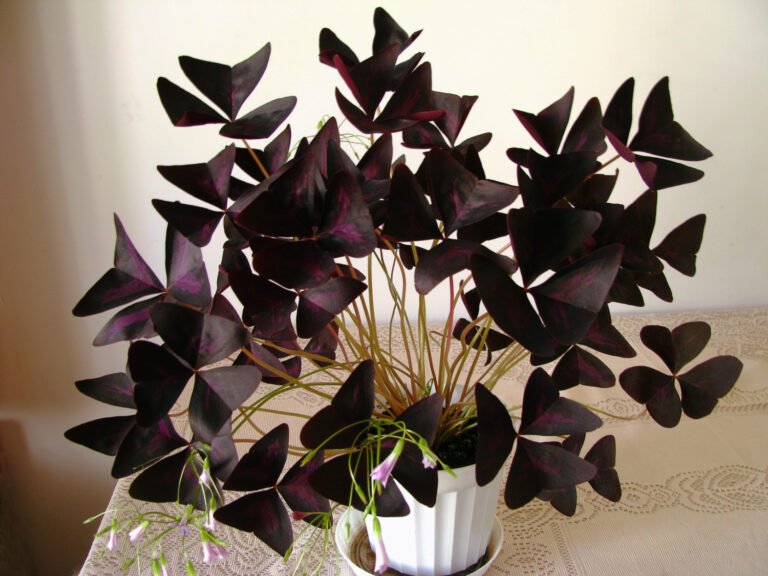Popular with unique names like Shamrock Plant, Love Plant, Purple Shamrock, and Lucky Clover, the Oxalis Triangularis plant can become your favorite houseplant if you have suitable conditions for it to thrive. A healthy Oxalis can grow up to 12 inches and bear beautiful white and pink flowers.
While growing my purple Oxalis, I learned a lot about its growing patterns and requirements. I’ll share some crucial things you must know to plant and grow your own gorgeous Oxalis Triangularis with ease!
It Grows Well In a Well-drained Soil
The first stage is planting! Now, most Oxalis plants grow well in moist, well-drained soil. What works best for me is a mixture of normal potting mix and peat moss or coco peat, along with perlite for good drainage. You can simply mix these three ingredients in equal parts to plant your Oxalis.
I sowed Oxalis seeds in springtime. And based on the outcome, I think that’s actually the best time to plant it. Just remember to observe and take care of it during winter.
Give It Enough Light
The Oxalis plant thrives in partial bright light. I placed mine in the eastern corner of my living room so it gets enough bright indirect light throughout the day, especially the direct morning sunlight. This light setting helped my plant triple in size within three months before winter.
But, I also noticed that when I kept my Oxalis in direct sunlight throughout the day for a few days, the leaves turned floppy. So, if you’re keeping your plant outdoors, remember to keep it in partial shade. Most importantly, bring your Oxalis indoors in winter.
Do Not Overwater Your Oxalis Triangularis!
Since Oxalis grows well in moist soil, I water my Oxalis plant every second day, and it gives me the best results. Like many other house plants, the Oxalis plant leaves wilt or drop when it runs out of water, but it’s best not to wait until that happens to water it.

If your Oxalis is still in the initial growing stage with only 3-4 leaves, you can wait a little longer before watering it again. As for mine, I just watched it in winter. As most of the leaves fell off, I didn’t water it much.
As soon as the temperature and light rose again, I started watering it regularly. Soon, the corms started to grow and the plant blossomed.
The leaves of Oxalis Triangularis tend to shut themselves when they are disturbed or shaken a lot.
Only Fertilize It In the Growing Season
This Oxalis species doesn’t require frequent fertilization; I always do it for my Triangularis monthly in spring during the bloom time (which mostly comes after its dormancy period) and occasionally in fall.
But when your plant is dormant in winter or rainy season, it’s better off without fertilizer.
As for the fertilizer, water-soluble houseplant fertilizers with equal parts of potassium, nitrogen, and phosphorus are best for your Oxalis’s optimal growth and health.
It Doesn’t Need Excessive Pruning
My Oxalis Triangularis plant didn’t ask for regular or half-yearly pruning. I just kept removing foliage and leaves that had died or turned brown. It’s also better to cut down the flower stalks after the flowers have bloomed and wilted.
Be Careful While Repotting
You won’t believe it, but my Oxalis grew aggressively when I repotted it into a larger plant than the one it had been living in since its plantation, given the right environment, of course. So, the larger the pot, the more its roots grow and the more the leaves flourish.
However, be careful about it while repotting an Oxalis Triangularis. If you disturb the root system, the entire plant could die. Do not disturb the roots and simply just shift the plant along with the potting soil to a new pot with a fresh soil mix.
Oxalis Triangularis is a gorgeous exotic indoor plant that is actually quite easy to maintain. All you need to do is to give it enough light, water, and plant food, and your Oxalis will thrive!









